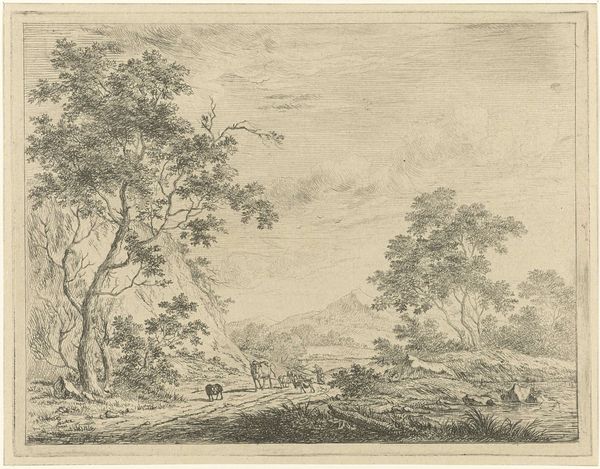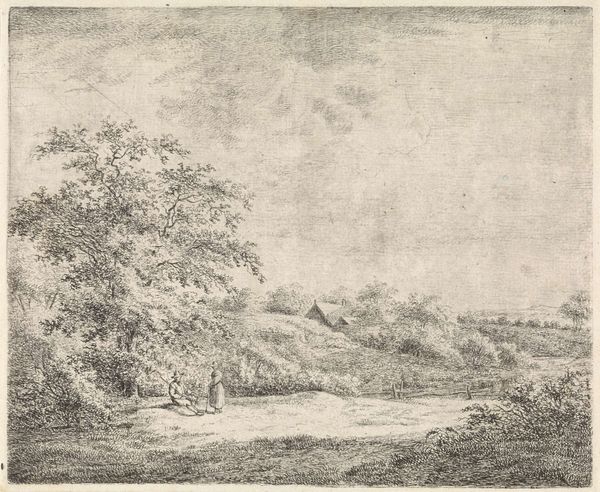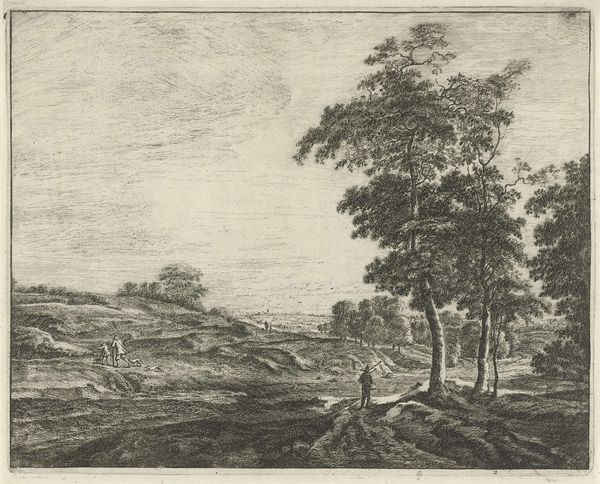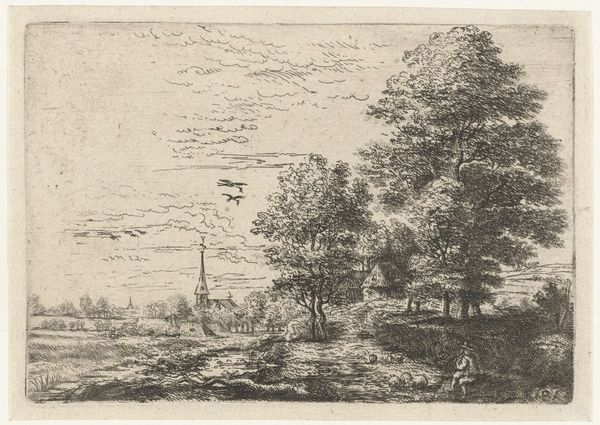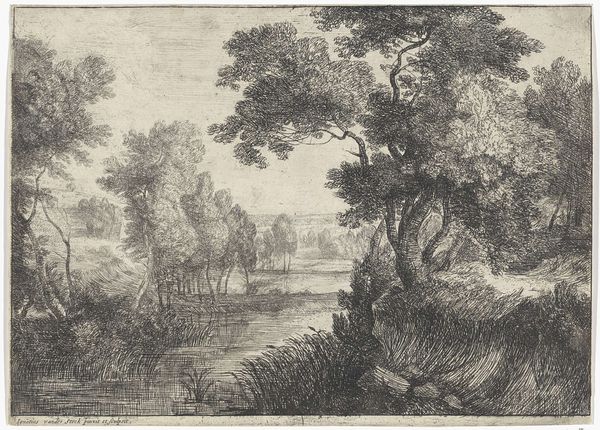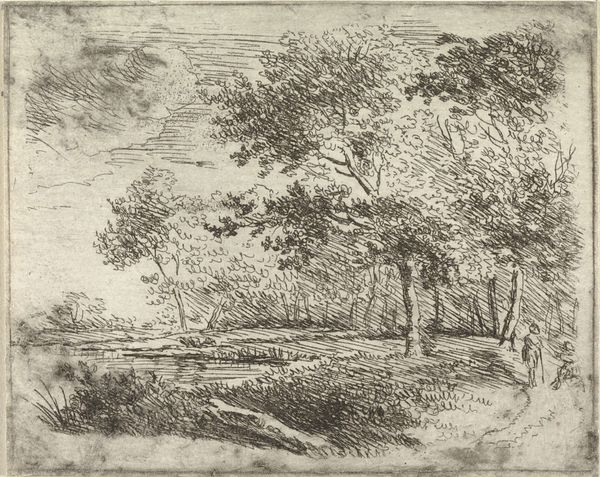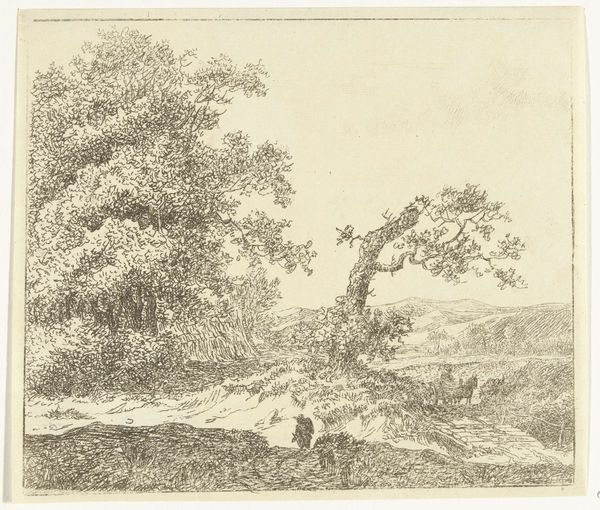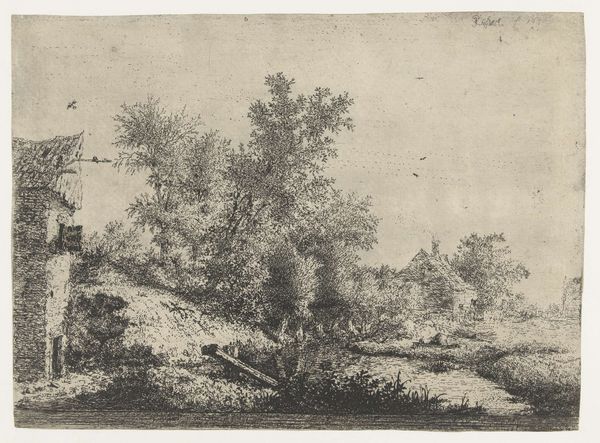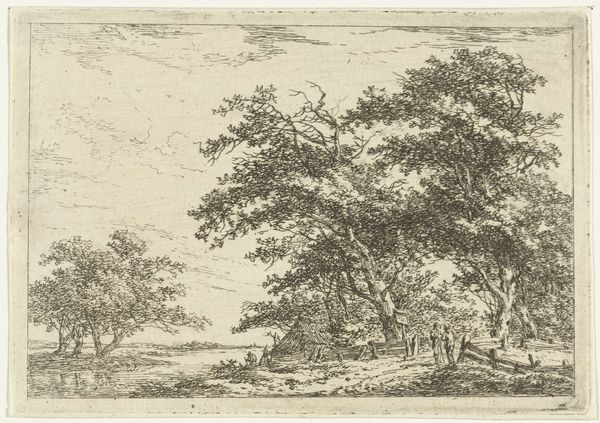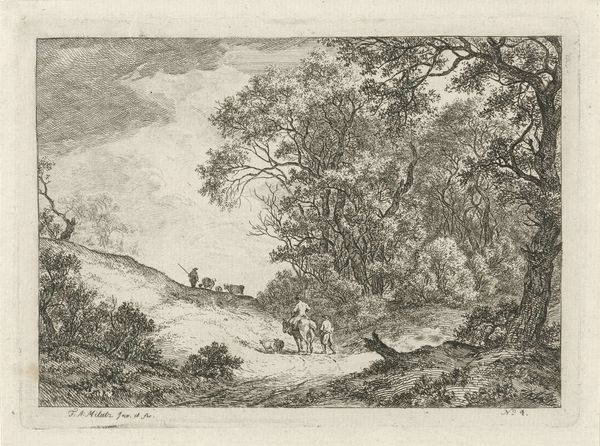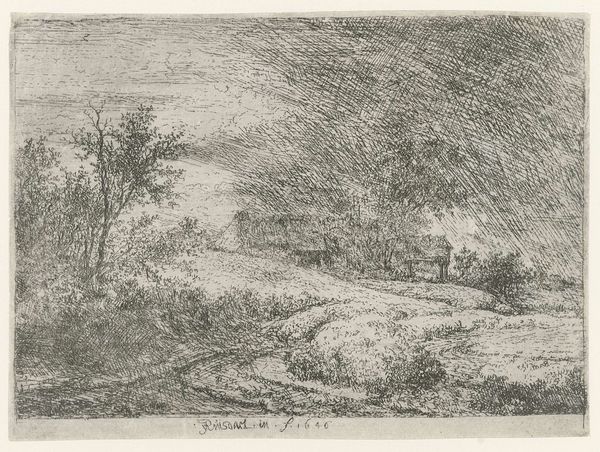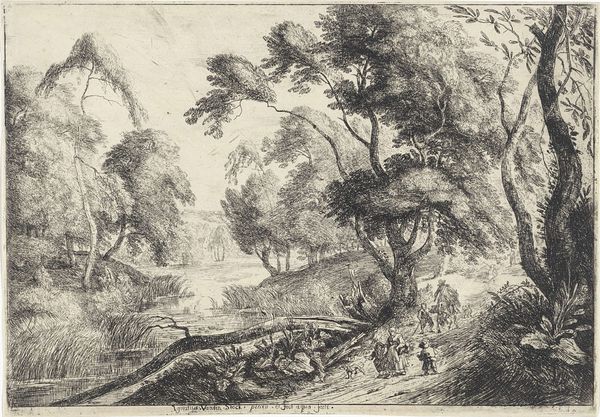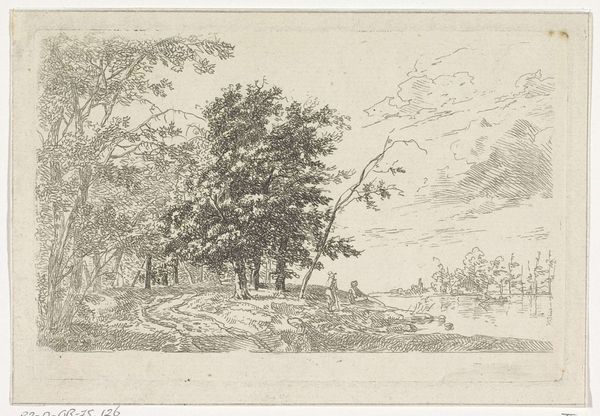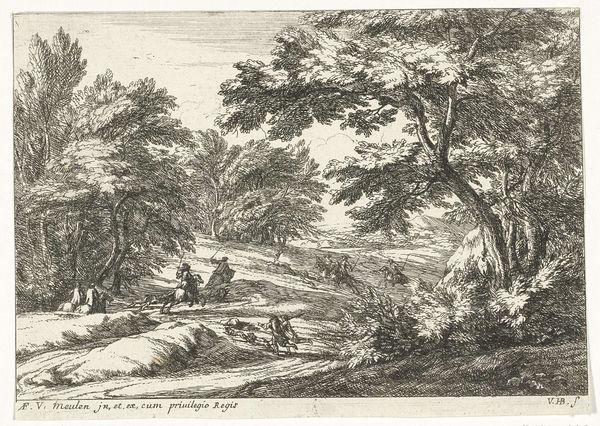
Dimensions: height 106 mm, width 150 mm
Copyright: Rijks Museum: Open Domain
Curator: Johannes Janson's "Landscape with Two Fishermen," likely created between 1761 and 1784, captures a quiet scene. What strikes you first about this print? Editor: The meticulousness. The etching technique lends itself beautifully to rendering light, especially those luminous clouds that seem to dominate the composition. Curator: Absolutely, but consider the socio-economic implications of landscape art during that period. Who had access to land, and who was being excluded or exploited in these supposedly idyllic settings? Landscapes, particularly those featuring seemingly benign figures like fishermen, often masked underlying power structures and land disputes. Editor: I agree that there’s a socio-political aspect, however, the composition is worth investigating as well. Observe the diagonal emphasis—the rising land mass to the right countered by the open expanse to the left, guiding our eye. And that lone, contorted tree—its silhouette is exquisite. Curator: Speaking of the contorted tree, one could interpret it as a metaphor for resilience. The artist's inclusion of such features invites contemplation on the intersection of humans and nature, particularly regarding how systems of oppression impact marginalized populations. The presence of these fishermen can be viewed not only as an occupational status, but potentially, how labor becomes intrinsically connected to the natural landscape. Editor: Semiotically, that is a convincing read. If we accept nature, as it is here, depicted as both tranquil and yet somehow resistant, we might see these forms suggesting states of human feeling: reverie and tension in the very same place. Note how Janson carefully orchestrates positive and negative space using only linear means to make the pastoral compelling. Curator: Precisely. And let's think about audience: To whom did this artwork speak? Who had the means to purchase and display prints like these, and what values did such ownership signify? Examining those factors really reframes what a "simple" landscape actually communicated at the time. Editor: It becomes much richer than simply technique and scenery, doesn't it? Thinking beyond form and moving into the political dimensions allows it to resonate anew, for our contemporary moment.
Comments
No comments
Be the first to comment and join the conversation on the ultimate creative platform.
